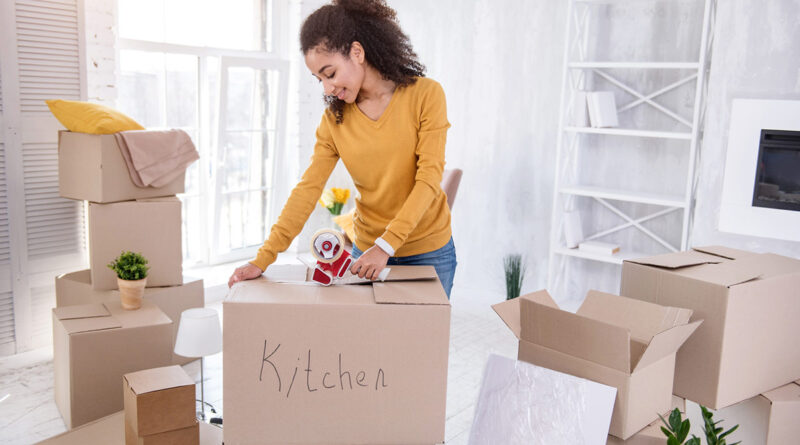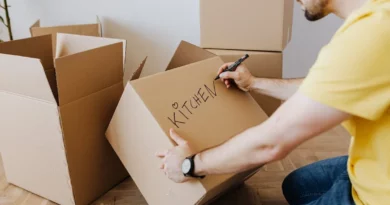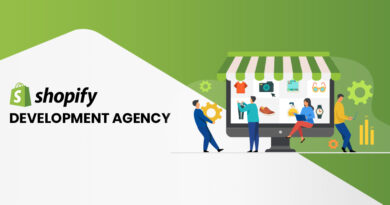Boxed Packaged Goods | Types of Packaging, Benefits, and Uses
Using boxed packaged goods makes it easier to store your product and keep it fresh longer. It also provides more value for your money and is also better for the environment. Plus, boxed goods help your business grow. Whether you’re a small business or a large one, boxed packaged goods are a great choice.
Cost of boxed packaged goods
The cost of boxed packaged goods depends on the type of materials used to package them. The most common type is paperboard, which can be folded to fit a variety of product shapes. It is also environmentally friendly and relatively inexpensive. Paperboard packaging can cost as little as $0.14 per unit.
The type of material used for boxed packaging is also dependent on the goods being shipped. Some products are shipped in plastic bags, while others are in molded plastic blisters. Plastic blisters are used for additional protection as well as to keep the products in place. Flexible sheets of bubble wrap are often used as well.
Another factor in the cost of packaging is transportation. This factor is often overlooked by many consumers, but it affects the cost of shipping and packaging goods. The price of oil has increased by over 40 percent since the beginning of the year. This increase will affect businesses’ ability to distribute their products. Additionally, more people will be on the road or flying, which will increase packaging costs.
There are many costs involved in boxed packaging. Labor, materials, tooling, and set-up fees are a few of the main factors. While some of these costs are fixed, many are variable. Lower volume manufacturers can use economies of scale to reduce their costs. If you have a high volume, the cost of packaging can be as low as $0.10 per unit.
Boxed packaging materials are usually cardboard or plastic. The materials used to package them help to protect the goods. They also keep them stable and secure. Dunnage is another material used to secure the package while it is in transport. It can be old cardboard or even pieces of the pallet. Dunnage can help reduce shipping costs and warehousing fees.
Convenience
Boxed packaged goods are a great convenience for consumers. They are less expensive and are easy to store. In addition, they don’t require any additional preparation time, such as cooking. Furthermore, they are generally healthier, with less sugar and fat. They also tend to be more affordable than similar items at the grocery store.
As the popularity of boxed packaged goods increases, manufacturers are paying attention. In the next few years, the boxed packaged goods industry is expected to grow at a compound annual growth rate of 6.3%. As a result, this trend is not expected to slow down anytime soon.
Convenience packaging may include single-use containers or products packaged in small packaging. Often, convenience packaging is designed to allow consumers to easily use products without worrying about messes or waste. However, the convenience factor of a given product may also be influenced by its design. For example, skincare products packaged in a tube may be more convenient than those packaged in pump bottles.
In addition to being convenient, boxed packaged goods also provide a high level of protection for the product. Boxed packaging also helps in containing small accessories that may accompany the product. This makes tracking the product easy. The packaging slips of boxed goods also help in keeping track of lost or stolen goods.
The convenience of boxed packaged goods is a popular trend among consumers. Increasingly, consumers want their meals and snacks to be ready at the click of a button. In addition, time is a valuable commodity, and consumers want to find the most convenient way to prepare their food.
Environmental impact
According to a study by the Tellus Institute, boxed packaged goods account for up to half of all municipal solid waste. While some materials can be recycled, the environmental impact of packaging is still significant. Plastic is particularly harmful to the environment. In addition, some cardboard types are worse for the environment than others. This is why consumers should choose products that are packaged in recyclable materials whenever possible.
The Life Cycle Assessment, which measures the environmental impact of packaged food products, also examines the impact of packaging. The analysis considers the environmental impact of packaging from the primary material, to the secondary and tertiary materials used. The use phase of a food product is of particular interest because of the amount of food that is wasted and the amount of water and energy consumed by private households.
The composition of food packaging is also important. The presence of oxygen, nitrogen, and carbon dioxide contributes to the rapid oxidation and spoilage of food. Therefore, food packaging should contain polymer materials that have low oxidation and gas permeability. This will minimize the amount of food lost to the environment.
Cost of styrofoam packaging
Styrofoam packaging is a common material used to protect boxed packaged goods. It is a cheap and environmentally friendly way to fill shipping boxes. It is molded into different shapes to cushion items. It is also biodegradable and antistatic.
Styrofoam is used in the packaging of big electronic devices. It comes in a variety of shapes to protect the product and the box. It also provides an extra layer of protection between the device and the box. Unfortunately, most of the styrofoam packaging is not recyclable. Many of these boxes never even make it to a recycling facility. As a result, thousands of boxes end up in landfills or oceans. It takes about 50 years for Styrofoam to decompose.
Cardboard is a great eco-friendly, cost-efficient, and environmentally friendly alternative to styrofoam. Cardboard can be recycled and repurposed as a void fill material or as wrapping material. By using cardboard instead of styrofoam, you can cut your carbon footprint and save money on waste hauling.
Styrofoam packaging contributes to the environmental problem, polluting waterways and affecting wildlife. It also does not biodegrade quickly and lingers in the environment for a long time. It’s also a top source of litter. As a result, styrofoam and polystyrene are two types of plastic that are not biodegradable.
During domestic shipping, goods travel long distances over rough terrain. Without the protection provided by packaging, goods would never arrive safely. Throughout the supply chain, different types of packaging are used, including cardboard and styrofoam.
The Benefits Of Packaging
Packaging can provide a wide variety of benefits for a company. These include increased visibility of a product, creating a visual identity for the product, and communicating important information about the product, including its ingredients, how to use it, and other helpful information. These benefits can significantly increase a company’s profits and market share.
Physical Protection
Physical Protection of packaging is an important aspect of product safety. It ensures that products are free of contaminants and safe to eat. This protection can be achieved by using the correct substrate and design. Choosing the right material will help preserve the product during manufacturing and avoid expensive recalls. Physical protection also helps prevent damage during transport and storage.
Physical protection of packaging is needed to prevent products from crushing during transport, and to provide stacking strength for normal handling. This can be provided by wood boxes, fiberboard cartons, glass jars, and cans. Physical protection is also needed to minimize moisture gain or loss. Too much moisture can cause a package to become underweight or cause a product to lose its crispness. Additionally, sanitary protective barriers are necessary to prevent contamination and the entry of microorganisms and gases into the package.
Containment
Packaging offers several environmental benefits, including reduced waste. For example, packaging can be recycled or reused, and can also add convenience to distribution, sale, and use. For example, single-serving packages can control how much is used, and large bulk commodities can be divided into smaller packages for households. In addition, sealed one-liter bottles can facilitate inventory control.
Another environmental benefit is the protection it provides against air and moisture. When packaged properly, products can avoid spills, odors, and dust from getting into the environment. The type of packaging used will also dictate how the product is processed, such as using metal cans or glass jars to prevent recontamination. Similarly, the shape of the package will dictate the space required for storage. Shrinkable films are also helpful because they provide an effective medium for the compaction of product lots on pallets.
Defense
Whether it’s for food products, electronics, or household goods, packaging plays an important role in their preservation and marketability. As such, many companies are opting for contract packaging services to minimize costs and improve quality and speed of delivery. Here are a few reasons why packaging is so important for a company:
First, proper packaging preserves the product’s quality for years. It gives it a proper shape and qualitative structure. Second, it allows workers to concentrate on less strenuous tasks. Finally, proper packaging makes a product compatible with the lifestyle of the common man. Whether it is for a food product, an electronic device, or a car, the packaging is a crucial part of the product’s overall quality and performance.
Easy Handling
Packaging can make a big difference in the success of a retail business. It can make it easier for staff to handle a product and reduce the risk of spills, breakage, or other problems. It can also help you reduce the costs associated with shipping your products. It is important to choose packaging that is easy to handle and durable.
Packaging can be recycled multiple times. It can also help you cut costs and waiting times in the supply chain. The packaging should also be easy for consumers to handle and recyclable.
Premium Touch
Premium Touch Packaging is a unique way to create packaging that combines the tactile and visual experience. Using this type of packaging helps brands reach consumers on a deeper level, enhancing shelf appeal and meeting sustainability goals. The touch-activated film can be applied to the entire surface of a package, giving it a high-end appearance without the premium price tag.
Soft touch packaging evokes a luxurious feel, making luxury products look more sophisticated and elegant. This finish is also eco-friendly, allowing for easy recycling. It is also a great gift idea because of its affordable price.
Types Of Packaging And Uses
Packaging plays a key role in creating brand identity. While it’s tempting to opt for a generic box, this is not always the best option for your products. Instead, you should choose packaging that will protect your products in transit, storage, and when they reach the buyer’s home. This way, you can be sure that your products won’t suffer from damage or falls. Consider the fragility of your product, its shelf life, and other factors, to choose the right packaging for your products.
Paperboard Boxes
If you’re in the packaging market, then you’re probably wondering whether paperboard boxes are the right solution for your needs. While the basic cardboard boxes are affordable and strong, they have limitations as well. They are also prone to water absorption, which makes them less suitable for some applications. Depending on your product and needs, you may want to supplement your paperboard box with an inner plastic or wax bag. If you’re unsure, take some time to think about your packaging needs and consult with an expert.
Paperboard is often treated with polyethylene to increase its barrier properties. This is used in rigid and semi-rigid cartons and wraps for solids and fluids. The material is also commonly added to food and beverages requiring extended shelf life, such as aseptic milk. Multilayer laminates are also commonly used. These can contain seven different layers and provide good barrier properties.
Paperboard boxes come in many different shapes and sizes. Some are rectangular or square, while others are triangular or hexagonal. Some of these boxes are 100% paperboard, while others are made of a mixture of paperboard and plastic. Some types of these boxes even feature a clear film window to allow consumers to see what’s inside. Others contain a wax bag or plastic bag to protect the food inside.
Rigid Boxes
Rigid boxes are a versatile form of packaging and can be used for a variety of items. They are often made of plastic and come in different sizes, styles, and designs. They can also have different lids and trays. The standard size is three cubic feet, which provides enough room to pack small items, but smaller sizes are available as well. Some models even have a removable tray insert, which can separate different parts of a product.
Rigid boxes can be made of several different materials, including chipboard, which is inexpensive and durable. Polystyrene is another common material, which has many applications and can protect fragile items. It can also be cut to fit the size of the product. Another popular material for rigid boxes is litho-laminate paper, which is printed on a corrugated board and laminated to it.
Rigid boxes are often used for high-end products. They convey a sense of elegance, luxury, and prestige. They are an excellent choice for products such as electronics. Moreover, many consumers reuse their rigid boxes after purchasing them, extending their brand recognition even after the purchase.
Corrugated Boxes
Corrugated boxes are versatile packaging materials. They are available in a variety of colors and textures. These containers are usually made of kraft paper or test paper. The latter is more durable and is generally more expensive. Kraft paper is typically made from 70-80% virgin chemical pulp fiber from softwood trees. It is available in brown, white, speckled, and bleached varieties.
Corrugated boxes can be single or double-walled. Double-wall boxes can handle heavier objects, as the material has two layers. The product is placed on one cover, and the other is used as the lid. The inner and outer covers are interlocked, which prevents the covers from separating during transport.
The most common style of corrugated box is called the slotted style. It features inner flaps of different lengths, which meet in the center when the box is closed. This type of box is highly efficient to manufacture and has very little waste, as the outer flaps overlap. This type of corrugated box is often sealed with staples.
Plastics
Plastics are used in a wide range of applications to produce products that are durable, light, and flexible. They provide unparalleled design versatility and are highly efficient materials due to their high strength-to-weight ratio, high stiffness, and ductility. They also exhibit excellent properties such as corrosion resistance, bio-inertness, and thermal insulation. They also have a low cost of production and are resource-efficient. Plastics are manufactured from carbon and hydrogen compounds, which include both renewable and fossil fuels.
One of the most popular types of plastic is polypropylene. It is used in packaging for a variety of food and drinks. Polypropylene is a relatively stiff material that is not brittle, making it an ideal choice for food packaging. It is commonly used in yogurt containers, cream cheese/sour cream containers, and VSP containers.
Polyethylene is another material with many uses. It is a good material for film applications and has good gas barrier properties. Some of its other uses include making plastic food containers, bins, and post boxes. Some polypropylene is recycled and can be used in products such as kayaks and bicycle racks.
Chipboard
Chipboard is a type of recycled paper stock that has several uses in many industries. It is inexpensive, lightweight, and easy to fold, making it an attractive packaging option. Depending on the type of product you want to package, chipboard may be a better choice than corrugated cardboard. However, chipboard does not hold up to the stress of transportation as well as corrugated cardboard.
Although corrugated cardboard is still one of the most common shipping materials, it’s not necessary for all products. Some products don’t need complete protection from a cardboard box but do need support throughout the shipping process. In these cases, a chipboard can be a valuable alternative. Chipboard has several advantages that make it the preferred choice in many industries.
One of the most common uses of chipboard is as padding material. Chipboard pads can be inserted into a mailer and provide support and protection for items inside. They can also be used as top layers for traditional packaging. Chipboard pads are available in a variety of sizes and thicknesses.
Cotton Bags
Cotton Bags are a great solution for packaging needs. They are 100% biodegradable, compostable, reusable, and recyclable. They can even be deconstructed into threads and reformed into different bags, eliminating the need for disposable plastic bags. Additionally, they have a high financial return and can be produced anywhere, not just in India.
In addition to packaging necessities, cotton bags are also great for carrying a variety of other items. They are especially handy for bath and beauty products. These bags also work as a barrier between the outer packaging and the product itself. Though they cannot protect glass items from breakage, they can protect them from dust and other debris while in transit. Other uses for cotton bags include DIY kits, stationery, and other small items.
Another great advantage of cotton bags is that they are biodegradable and can be reused, unlike plastic grocery bags, which can only be used once. Additionally, cotton bags do not tear easily and are not prone to moisture, which may cause bacteria and mold to grow.
Jute Bags
Jute bags have a long history and are still popular today. These natural fibers can be used for a variety of applications from screen-printed wine bags to utility totes. They are also used to make heavy packaging and geotextiles and are biodegradable.
Jute bags are a sustainable, eco-friendly alternative to plastic bags. They can break down naturally within a few months, unlike plastic bags, which can take up to 1,000 years to degrade. In addition, they are highly durable, with the ability to withstand 50 pounds of weight. This makes them perfect reusable gift bags. They can also be the perfect size for your lunch bag or purse.
The global jute bag market is expected to grow at a compound annual growth rate of 15.8%. This is largely due to the return of many companies to commercial activities after the impact of COVID-19. Additionally, jute bags are seen as a more environmentally friendly alternative to plastic, since they can be reused several times.
Foil Sealed Bags
Foil-sealed bags are great for storing goods. They can hold up to 20 pounds of product and provide the ultimate protection from moisture and vapor infiltration. They also offer plenty of room for advertising and imprinting. Foil bags can be easily customized to fit any add-ons.
Foil-sealed bags are most commonly used for packaging tea and coffee products. They preserve the flavor of the products, prevent microbial growth, and enhance shelf life. These bags are also useful for packaging medical and surgical products. These bags are lightweight and easy to fill. They also have a welded bottom and sides.
Foil-sealed bags are also available with zippers, making it easier to open them for the consumer. These bags also come with degassing valves, which prevent air from entering the pouch and causing the product inside to expand and burst. These bags are a cost-effective packaging solution for many products.
Read on: Newsinfowars.com




